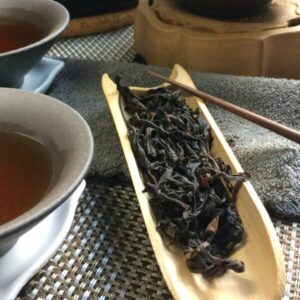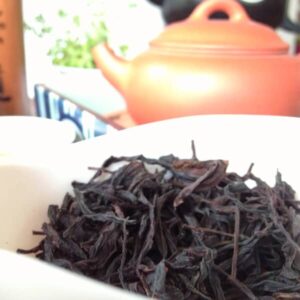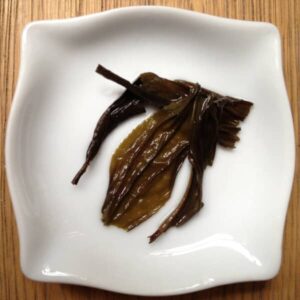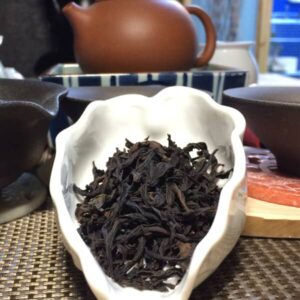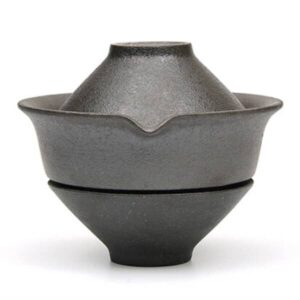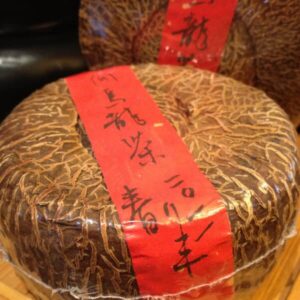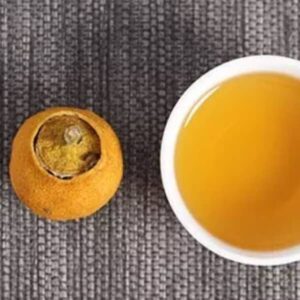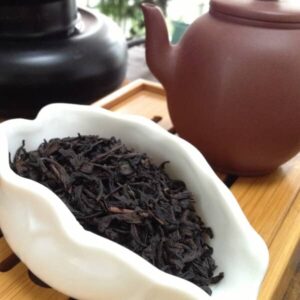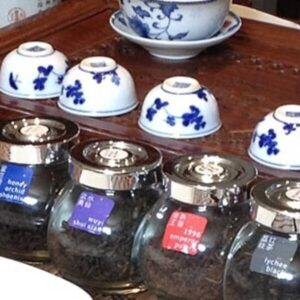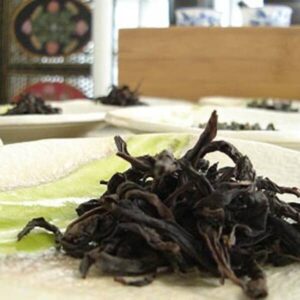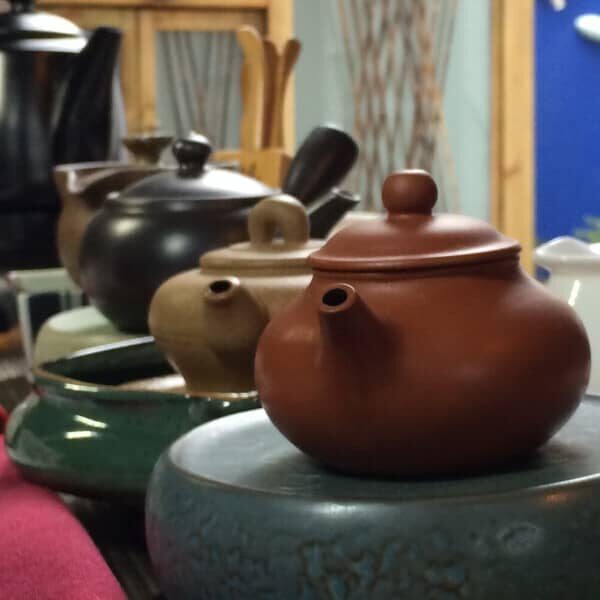For The Days You Needed A Bit More Oomph
More Oxidized & Vintage Teas
All tea starts off green. For oolongs, the tea leaves are given the “black tea treatment” to achieve the desired oxidation levels and then they are given the “green tea treatment” to halt the oxidation process. Some dark oolongs may then be slowly toasted over charcoal made from fruit trees.
Unlike lighter oolongs, darker oolong tea leaves are given more of the “black tea treatment” first to get to the desired oxidation levels (typically 50% to 80%). Both types of oolongs then go through the “green tea treatment” to fix the oxidation level.
The liquor of dark oolong tea can vary from sweet ripened fruit to a robust charcoal roast. There is no better way to brighten your afternoons or warm your insides on a cool winter’s day than to enjoy a pot of dark oolong tea.
OUR MORE OXIDIZED OOLONG TEAS
Whole-leaf black tea has a bold character and ranges from light, almost floral to full-bodied. Full oxidation results in the blackened appearance of its leaves and the tea’s dark, rich quality. The harvested leaves undergo hours of withering, twisting and rolling to develop high levels of oxidation. This creates black tea’s familiar dark and rice nature. Lesser grades may be chopped. Long, aggressive rolling makes for a robust tea, while lighter treatment leaves to a more delicate profile.
In China and Japan, black tea is known as ‘hong cha’ (红茶) and ‘kou cha’ (紅茶) respectively. Both words mean “red tea” because of the amber liquor it produces when infused.
OUR BLACK TEAS
Ripened Pu Erhs, also know as ‘shu pu erh’ (熟普洱) or ‘cooked pu erh’, are teas that have undergone an accelerated vintaging process that involves the very careful, skilled control of storage temperature, humidity and light conditions. Processed as green tea or ‘mao cha’, plucked, roasted and dried under the sun, they are then gathered into large warm piles, where they sit for months fermenting, though sometimes the vintaging is done in just 20-40 days. The process is called ‘wet storage’ (渥堆, ‘wo dui’, literally ‘wet pile’).
Ripened Pu Erhs can be loose-leaf or compressed into cakes or bricks or even sometimes into bamboo baskets or citrus peels. They are full bodied, with character and a lingering finish. The flavours are biscuity, fuearthy, woody, herbaceous, smooth, with somethting of the gentlemen’s club! The liquor is a beautiful amber, burnt sienna or tinged copper colour.
The Chinese say, ‘Some grandpas make Pu Erhs for their grandsons to enjoy, but others want to drink it straightaway’. That is the dilemma, unfortunately – whether to enjoy the delicious brew right now or save it for further vintaging!
OUR RIPENED PU ERH TEAS & RED TEAS
Take part in the beautiful Chinese ‘gongfu cha’ tea ceremony while we shares with you our love of tea. You’ll discover how to appreciate the finer nuances of tea like a true connoisseur, yet in a light and relaxed setting.
You’ll be introduced to gorgeous teas with fascinating, evocative names like ‘snow buds’, ‘honey orchid phoenix’ and ‘dragon well’. The incredible range of flavours and aromas will amaze you.
~~ Whilst we patiently wait for the effective control of COVID-19 pandemic, our popular tea masterclasses are held online via our “Teas in the Clouds - Brew-along Masterclass”. ~~
OUR TEA MASTERCLASSES
Oxygen. Wonderful stuff.
But it also oxidises things: think iron rusting or copper coins going that weird green colour and the cut side of apple turning brown. Fresh tea leaves, like apples and other plants, have an enzyme called polyphenol oxidase. It is capable of oxidizing polyphenols which are very important molecules for protection against infections to giving them their pigments.
Polyphenol oxydase and the polyphenols themselves are stored in the plant’s cells, but when the cells are damaged, say by slicing an apple or dropping and bruising it, the cells are ruptured and the enzyme comes into contact with air. With the help of oxygen in the air, the polyphenol oxidase initiates a series of chemical reactions, transforming the polyphenols and eventually producing melanins (brown pigments).
The general name for this process is “enzymatic browning,” and the fabulous thing (for tea at least) is that it doesn’t just change the appearance of produce: it also alters flavour, scent, and nutritional value.
LET’S GO PICK SOME TEAS


